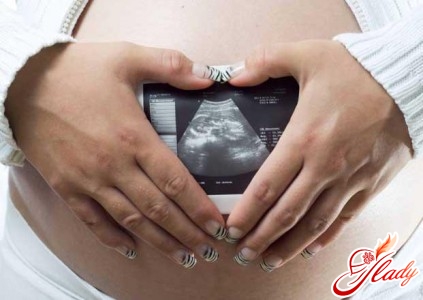 Sometimes when pregnancy is overdue,unplanned rupture of the amniotic sac or pregnancy-induced hypertension, preeclampsia, fetal growth cessation, etc., there is a need to stimulate labor. In this case, you may first try to start labor on your own, and only if you fail or do not have time to use these methods, should you resort to medical methods of artificially inducing labor. After consulting with your doctor, you can try the following stimulation methods:
Sometimes when pregnancy is overdue,unplanned rupture of the amniotic sac or pregnancy-induced hypertension, preeclampsia, fetal growth cessation, etc., there is a need to stimulate labor. In this case, you may first try to start labor on your own, and only if you fail or do not have time to use these methods, should you resort to medical methods of artificially inducing labor. After consulting with your doctor, you can try the following stimulation methods:
Acupressure
Pressing with the thumb or index finger onCertain points sometimes cause or intensify contractions. One of these points (splenic 6) is located four fingers above the inner ankle joint. You press on the shin at different angles. This is a painful point. Try pressing three times for 10-15 seconds with a few seconds between each. You can practice finding the point on your partner or a non-pregnant friend. It is also possible to soften the cervix or stimulate contractions by irritating certain acupuncture points with electrical impulses. The following points are used: splenic 6, located above the inner ankle joint, and liver 3, located on the top of the foot (the exact positions should be determined by a doctor).
Stimulation of the intestine
During contraction and emptying of the intestinesIncreases prostaglandin production, causing the cervix to soften. Contractions can be induced by an enema, creating enough intestinal activity to cause contractions. Large-volume enemas are more effective (but also more unpleasant) than small volumes intended for home use. Castor oil causes powerful intestinal contractions and has been used for many years to induce labor with some success. Contractions may occur soon after ingestion or several hours later. Castor oil can cause painful intestinal spasms and may aggravate hemorrhoids. It is sometimes used in combination with an enema. Your doctor should discuss the method of stimulation with you.
Stimulation of the clitoris
Sexual arousal, especially orgasm,causes contractions of the uterus, the prostaglandins released act on the cervix. Manual or oral stimulation of the clitoris, even without orgasm, can also be effective in initiating labor. Manual or oral-genital stimulation can be performed as long as the amniotic sac is intact and if these methods are acceptable to you and your partner. If the amniotic sac has ruptured, only clitoral stimulation is possible, since nothing should enter the vagina. Air entering the vagina is dangerous and should not occur. If you choose these methods, try to make them as pleasurable as possible for you.
Stimulation of nipples
Nipple stimulation helps softencervix and causes contractions. In some cases, it is recommended to perform nipple stimulation several times a day. However, you should always be in contact with your doctor or midwife. Sometimes nipple stimulation causes contractions that are too long (more than 60 seconds) or too strong (painful) and the baby may not tolerate them well. To protect against these potential problems, nipple stimulation should be performed for the first time in a clinical setting with electronic fetal monitoring. This is how the fetus is feeling (contraction stress test). Then, if everything is normal, you can go home and continue nipple stimulation. Another way to protect against contractions that are too long and strong is to time the uterine contractions caused by nipple stimulation. If contractions are painful and last more than one minute, reduce the stimulation (from both breasts to one; from continuous to short-term). To stimulate, gently tap or stroke one nipple with your fingertips or a towel, or squeeze it with your fingers. Start with one nipple. After a few minutes, you will probably feel a contraction. If not, stimulate both nipples. Since contractions may stop immediately after you stop stimulating, you will have to continue this activity for hours if you are in a hurry to start labor. If your goal is to soften the cervix and you are not in a hurry to start labor right away (for example, artificial induction of labor is planned for a few days), you can stimulate or gently massage the breasts with a warm, damp towel for an hour, three times a day. Sometimes a breast pump is used for stimulation, which is applied to each breast for 10 to 20 minutes. If you have a close friend with a three- to twelve-week old baby, you can try nipple stimulation by putting the baby to the breast. This procedure should be done very carefully. The baby should not be sleeping and not too hungry; A sleepy baby will not suck, and a hungry one will be upset. The best time is when the baby has woken up and eaten and just wants to suckle again. "Feeding" for 10 minutes on each breast may be enough. Sit on an oilcloth, because the water may break. In this case, you should avoid infection and follow hygiene rules. To stimulate the onset of labor in clinical settings, various methods are used: separation of the fetal membrane, artificial opening of the amniotic sac, prostaglandin gel, intravenous oxytocin, etc. The choice of method depends on the condition of the cervix and the approaches to the problem accepted in a given clinic. If you are going to artificial induction of labor, ask what method will be used so you know what to expect.
Fetal membrane separation
A relatively conservative procedure, but rarely successful. A doctor may try it if the cervix is soft and dilated enough for the doctor's finger to pass through.
Artificial opening of the bladder
Rarely successful if the cervixdense (immature), not smoothed out and directed backwards. Artificial opening of the amniotic sac is sometimes performed before or together with the oxytocin injection if the position of the cervix is "favorable" for this procedure, i.e. it is ripe, directed forwards, partially smoothed out and opened.
Prostaglandin Gel
A less invasive and more effective method than artificial rupture of the amniotic sac when the position of the cervix is “not favorable”.
Injection of oxytocin
Is the most common methodartificial induction of labor. Since the success rate is low if the cervix is not effacement and is directed backward, a combination method using prostaglandin gel followed by an oxytocin injection is becoming increasingly popular. In this method, the gel is applied several times in and around the cervix over a day or two, and oxytocin injections are given. Recommended reading:









